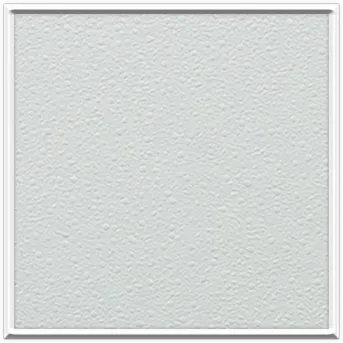Nov . 17, 2024 08:02 Back to list
Ceiling Access Panel Dimensions for Various Applications and Installation Guidelines
Understanding Ceiling Access Panel Sizes A Guide
When it comes to installing access panels in ceilings, understanding the various sizes available is crucial for ensuring functionality and aesthetic appeal. Access panels serve as essential components in building construction, offering convenient access to plumbing, electrical wiring, and other critical systems that may require maintenance or inspection. This article will explore the common sizes of ceiling access panels, their uses, and factors to consider when selecting the right size for your needs.
Common Sizes of Ceiling Access Panels
Ceiling access panels come in various sizes to accommodate different applications. The most common sizes include
1. 12x12 - This is one of the smallest standard sizes and is suitable for accessing electrical junction boxes or small plumbing fixtures. It’s ideal for residential settings where minimal access is required. 2. 14x14 - Slightly larger than the 12x12 variant, this size offers a bit more access space, making it suitable for various small utilities.
3. 16x16 - While still relatively compact, the 16x16 access panel provides ample room for many maintenance tasks. It’s often used in commercial settings where accessibility is important but space is limited.
5. Custom Sizes - Occasionally, standard sizes may not meet specific needs, prompting the option for custom panels. These can be designed to fit particular spaces or applications, ensuring maximum accessibility where required.
ceiling access panel sizes

Choosing the Right Size
When selecting the appropriate access panel size, several factors should be considered
- Purpose The specific utility to be accessed largely determines the size. For instance, if you are accessing significant ductwork or large plumbing equipment, a larger panel is warranted. - Location Consider where the panel will be installed. In tight spaces or low overhead areas, smaller panels may be necessary, while larger, open spaces can accommodate bigger panels.
- Code Requirements Be aware of local building codes that might dictate minimum access panel sizes for specific applications, especially in commercial buildings.
- Aesthetic Considerations In areas where visibility is a concern, opting for a panel that blends seamlessly with the ceiling design can improve the overall look.
Conclusion
Understanding the sizes of ceiling access panels is essential for proper installation and functionality. By considering the application, location, building codes, and aesthetic preferences, you can select the right size for your needs. This ensures not only ease of access for maintenance personnel but also contributes to the overall integrity and efficiency of the building's infrastructure. Whether you choose a standard size or opt for a custom solution, access panels remain a pivotal element in modern construction, enhancing both convenience and safety.
-
Durable Ceiling T Grid Systems | Easy InstallationNewsAug.29,2025
-
PVC Gypsum Ceiling: Durable, Laminated Tiles for Modern SpacesNewsAug.28,2025
-
Pvc Gypsum Ceiling Is DurableNewsAug.21,2025
-
Mineral Fiber Board Is DurableNewsAug.21,2025
-
Ceiling Tile Clip Reusable DesignNewsAug.21,2025
-
Ceiling T Grid Modular DesignNewsAug.21,2025







